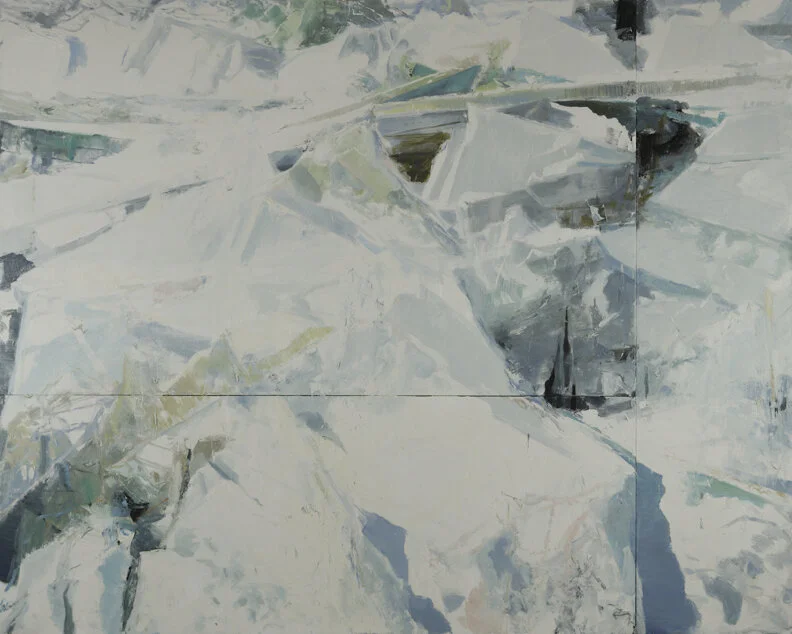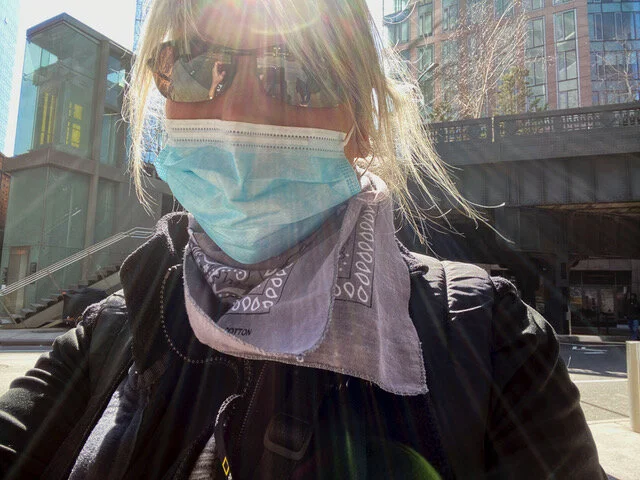“Time feels different.”
An Interview with Eric Aho
BMAC has exhibited the work of Eric Aho, who lives in nearby Saxtons River, Vermont, on numerous occasions over the past 20 years, including the 2009-2010 solo show, Ice Box.
Curator Katherine W. Hart calls Aho “one of the leading painters of landscape and the environment of his generation.” Aho’s work is in the permanent collections of the Fine Arts Museums of San Francisco and the Museum of Fine Arts, Boston, among others, and has been exhibited at the New Britain Museum of American Art, Currier Museum of Art, and American Academy of Arts and Letters. He was elected National Academician of the National Academy Museum in 2009.
New York City’s DC Moore Gallery has launched a new series, “From the Studio,” exploring how artists are continuing their work during this difficult time. The gallery has graciously permitted us to reprint their recent interview with Aho here.
Courtesy of DC Moore Gallery
Welcome!
I’m delighted to have an occasion to share what’s happening in the studio. Like everyone, my world has been turned upside down. We’ve been sheltering in place since March 13th, when Rachel and I took the advice of friends in Italy who were then in the thick of it. We’re lucky to live in Vermont, with our children Madelin and Emmett, where we have access to fresh food and the outdoors.
I’m looking closely right now. Painting loosely and looking closely. Seeing is what humanizes the landscape. I’m fascinated by the signs, markers, and gates posted at the edges of private land. Boundaries marking the lines between public and private land—a gate at a trail head leading into the forest. I’m noticing interruptions in the landscape everywhere. Like those gates, but also the rapids, waterfalls, and breaks in the river, natural disruptions. These interruptions in the natural world feel like they resonate with the fate of the larger world right now. I’ve painted these subjects for many years, yet right now they mean something different.
Eric Aho and his dog Elli at the falls of the Saxtons River, VT, in early April. Photography by Rachel Portesi.
My own studio is on the other side of the village, just a half mile walk from the house. Once we established ourselves at home with provisions and came up with some sort of a plan, I’ve attempted to keep to a regular daily schedule in the studio. Some days have been really hard. There are unusual stresses around the house. It’s been hard to get out of bed even, hard to get out of the house and go to work. But we’ve all found a way to work together and help each other through. I’m reminded how lucky I am to have access to my studio at a time when so many others do not. I’m also conscious of the important role the natural world plays in our lives. My daily walking commute, over the falls of the Saxtons River today, feels weirdly much like it always has, yet it isn’t at all.
We can joke that life in Vermont is a form of social distancing under normal circumstances and we’re especially grateful for this beautiful place when the world feels so dark. All jokes aside, something is different—my sense of time feels like it’s been altered— time feels different.
Typically, it’s up to me to tune out the voices and demands from the outside world. Now, it doesn’t feel like it’s up to me. It’s quiet. I hear from friends and we talk with family regularly. I never thought it could get quieter here in Vermont but it has. I was walking over a hill the other day. The sky, a clear robin’s egg blue was perfectly uninterrupted—no clouds, and no contrails. In four hours, not a single plane overhead.
Eric Aho “Broken River” (2009), oil, 80 x 100 inches from Ice Box
Now with the ice gone, I’m going into the woods again, into an interior. I walk and hang out there, drawing, maybe a little bit like Walt Whitman, who also enjoyed the openness of the woods in springtime where seated on a log or stump he’d jot notes—what he called his “ruling passion”—in his journal:
After you have exhausted what there is in business, politics, conviviality, love, and so on—have found that none of these finally satisfy, or permanently wear—what remains? Nature remains; to bring out from their torpid recesses, the affinities of a man or woman with the open air, the trees, fields, the changes of seasons—the sun by day and the stars of heaven by night.
The spring runoff is frantic this year. Fresh and beautiful. Water, water everywhere. Cascading down the sides of hills. Spilling over the banks of established streambeds it finds its own way leading somewhere.
View of Studio Wall. All oil on linen, 14 x 11 inches.
I’ve even found my own much smaller Marsden Hartley out there. To me, it looks a lot like his Smelt Brook Falls (1937) and for fun I painted it in something like his manner. Cézanne said, “carry your images in your head until you find them in nature.” I carried that favorite Hartley with me into the woods, a welcomed companion.
The edge of a field at the edge of the woods, it’s a buffer between worlds, like approaching a boundary with the self. Once in the woods, there’s an emptying out of the self. It takes me a few minutes to empty the noise from my head and just listen to the woods. There’s no room out there for anything negative—ambition, envy, jealousy, stresses of day to day life, over-reaching, self-critique. You just are.
Eric Aho, “Portage” (2020), oil on linen, 78 x 79 inches, courtesy of DC Moore Gallery.
Turns out, getting simple is a pretty complicated process. Getting lost and getting deep in a painting is kind of like what happens when walking in the woods. Gradually everything that isn’t important falls away or is removed leaving only what’s necessary.
No matter what happens, spring will be there, hopeful, optimistic, rich with rebirth and full of brightness—right on cue.
Take good care of yourselves,
Eric Aho
April 8, 2020
This interview was reprinted with permission from DC Moore Gallery. Read more interviews in their “From the Studio” series to learn how other artists are “continu[ing] their practices to create new works of art, while sharing perspectives of their current, everyday lives.”










